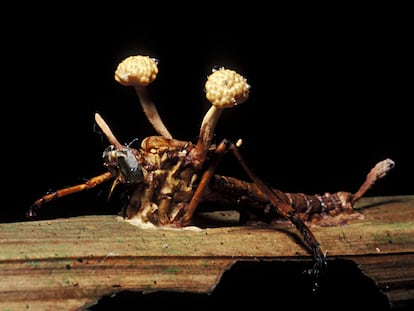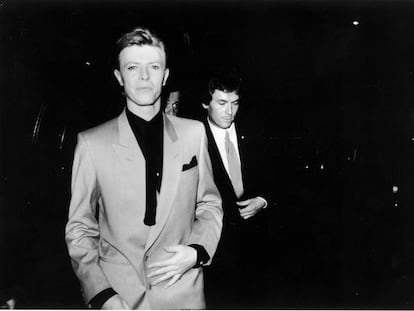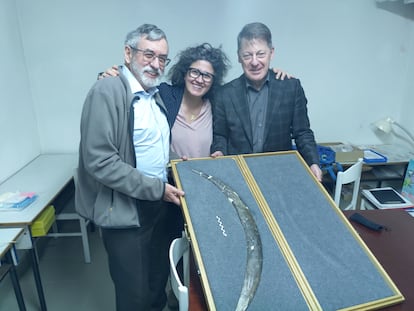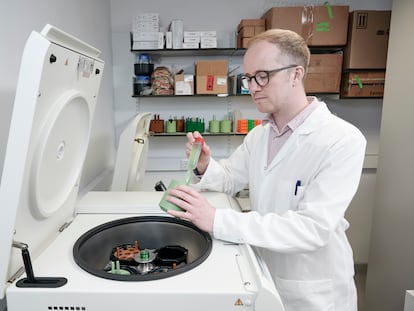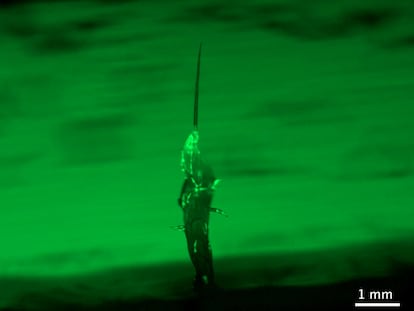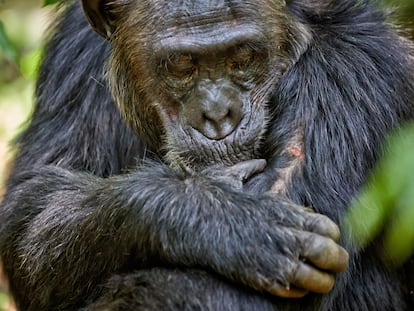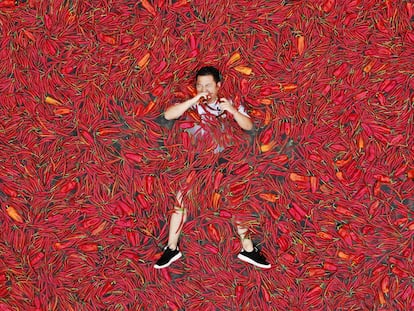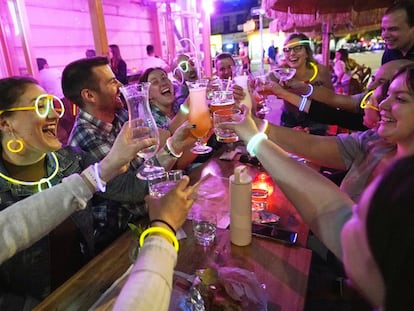Sea snails and shells play a fundamental ecological role in coastal ecosystems. And they’re disappearing
Parasitic species of fungi, worms, and wasps have the ability to manipulate their hosts, turning them into the living dead. Science still doesn’t know how they do it
A renowned theoretical physicist is proposing the possibility of sending tiny spacecraft to the nearest black hole to Earth to test the limits of physics. His colleagues believe the proposal is too speculative
A series of recent investigations suggests that the first human communities passed on their particular culinary traditions between generations
A study shows that there are a number of factors that define a charismatic person regardless of their age, sex or the country in which they live
In 70% of the populations analyzed in a study, the power relations are unclear, and neither sex dominates the other
The new dating of an object found decades ago in Poland reinforces the idea that early humans in Central Europe had technological insight tens of thousands of years ago
For the first time, a scientific study has succeeded in using live microbes to produce medicine — by digesting and fermenting waste
This distinctive feature could reveal information about an individual’s physical and mental health
A team of scientists studying nematodes has recorded unusual behavior that has never been seen before in nature
A new study comparing humans with other primates and rodents suggests that fur loss millions of years ago slowed the healing process in ‘Homo sapiens’
Researchers throughout the ages have struggled to systematize the study of a society’s well-being under the scientific method. Now, that’s changing
A study explores key aspects of gargalesis, such as why certain areas of the body are more sensitive, why children tend to be more susceptible, and what its possible evolutionary function might be
A new study compares differences and similarities in the exchange of erotic messages and content by those under 25 in Spain, Colombia and Mexico
Until now, these clashes in the arenas of the empire were only known from written records and artistic representations
A data analysis published in a scientific journal indicates that differences with placebo are marginal for most treatments for chronic and acute lower spine issues. But several experts question the study’s methodology
A curious attitude, mind wandering, age, and the changing of the seasons are some of the factors that influence the ability to recall and engage with the dream world, according to a new study
‘The Mind Guardian’, created by a Spanish team in collaboration with Samsung, utilizes artificial intelligence and traditional medical tests and is recommended for users over 55 years of age
Benign masochism refers to the phenomenon of enjoying initially negative experiences that do not cause actual harm
How waste management works in the body’s most mysterious organ, and how sleep medications may interfere
A new study reveals that close social contacts, such as friends, influence the composition of the microbiota — the community of microorganisms living inside the body that plays a crucial role in maintaining good health
Reusable receptacles are more environmentally friendly than disposable ones, but without proper hygiene they can accumulate more microorganisms than a toilet
This criminal industry has now become the third-largest global economy, following only the United States and China
Social media addiction can reduce grey matter, shorten attention spans, weaken memory, and distort core cognitive functions, according to recent research
A new study explores how the domesticated animals are able to rapidly associate words with pictures, but experts warn that this is not the same as linguistic understanding
The American researcher talks to EL PAÍS about how walking upright was the starting point for our brain enlargement and our pro-social nature


